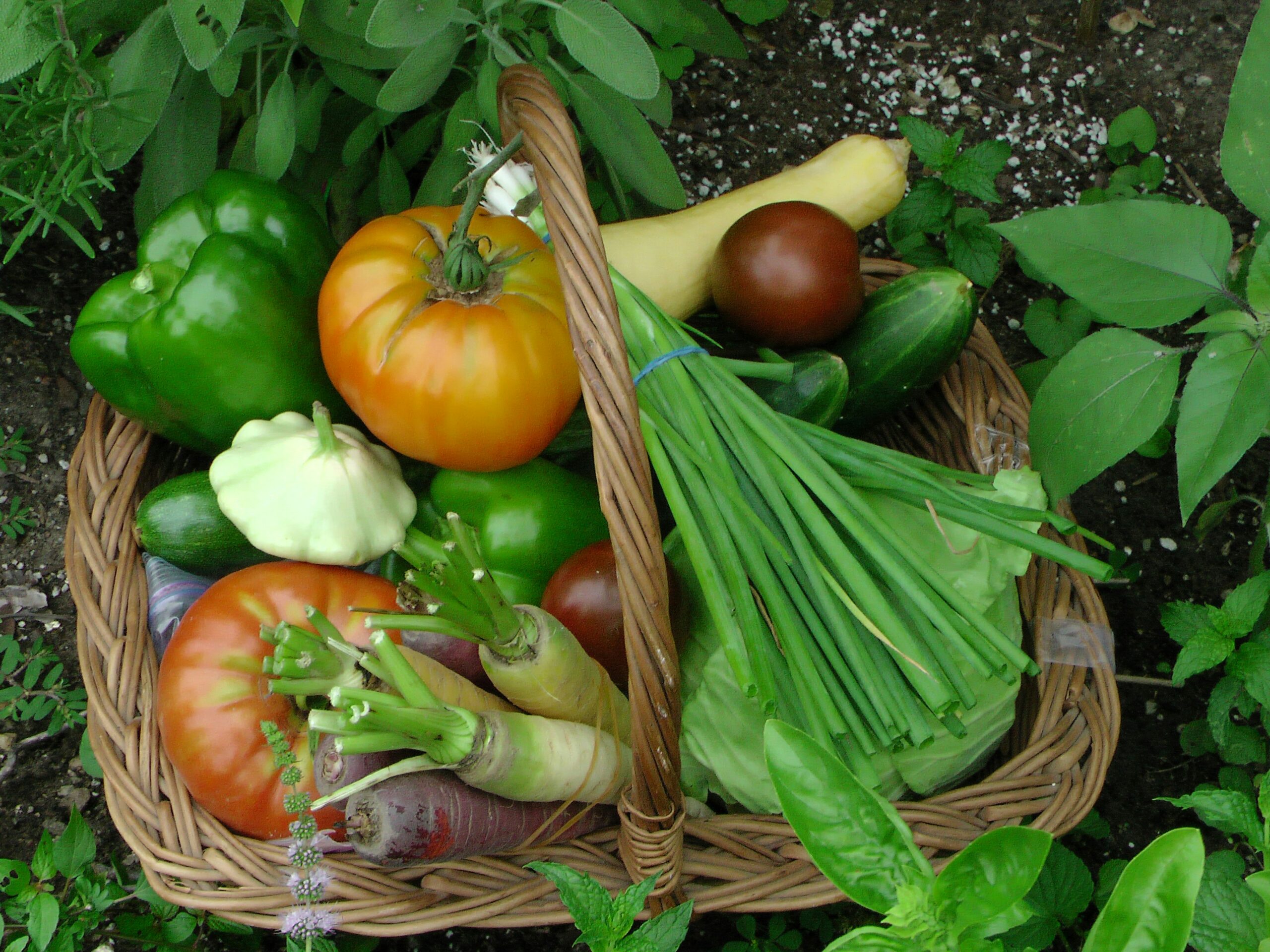Gardening isn’t just about plants—it’s about flavor, family, and a little peace in everyday life. Whether you’re dreaming of fresh herbs for your kitchen, colorful flowers to attract pollinators, or vegetables bursting with flavor, starting your own garden can transform your outdoor space and your meals.
Here’s why I love gardening and why you might too:
7 Reasons Why I Love to Garden
1. Homegrown fruits, vegetables, and herbs taste better
Produce from your own garden has a robust flavor that store-bought can’t match.
2. Gardening benefits your body, mind, and soul
Time outdoors, digging in the soil, and breathing fresh air leaves me feeling calm and refreshed.
3. Gratitude for God’s perfect design
Observing the garden ecosystem reminds me of the beauty in creation and the role we play in nurturing it.
4. Easy access to fresh ingredients
Having herbs and vegetables at your fingertips makes cooking easier, more fun, and visually beautiful.
5. Elevate meals effortlessly
Fresh ingredients transform everyday dishes from basic to gourmet with minimal effort.
6. A fun family activity
Kids love planting, watering, and harvesting, creating memories that last a lifetime.
7. Life lessons that grow with you
Gardening teaches patience, persistence, resilience, consistency, and delayed gratification—skills that carry over into parenting and life in general.
Bottom line: A garden is more than soil and seeds—it’s flavor, family, and a little slice of peace in your day.
I’ve made plenty of mistakes in my gardening journey, and I hope this 12-step guide helps save you time, frustration, and money. For a more in depth guide, I recommend this Companion Planting book.

12 Easy Steps to Start Your Own Garden
Step 1: Choose the Perfect Location
Pick a spot with at least 6 hours of sunlight daily. Make sure water is easily accessible. A garden that’s too far away can be neglected, leaving it vulnerable to pests and disease.
Step 2: Know Your Growing Zone
Weather can vary, so find your USDA growing zone to determine the best planting times. Check your zone here: USDA Plant Hardiness Zone Map.
Step 3: Raised Beds vs. In-Ground Gardens
Raised beds: Better control over soil, weeds, and drainage; easier on your back; deters rabbits. Higher setup cost and may need more frequent watering.
In-ground gardens: Flexible for space, rich soil with more earthworms, usually less expensive. Harder on your back, more weeds, may need fencing.
Tip: Small spaces? Try container gardens or pots.
Step 4: Plant at the Right Time
Most vegetables, fruits, and herbs are annuals. Plant fall/winter crops for cool-weather vegetables and spring/summer crops for warm-weather vegetables. Timing is key for success.
Step 5: Prepare Your Soil
Healthy soil = healthy plants. Amend poor soil with nutrient-rich compost or high-quality soil like Lowe’s organic garden soil. Maintain soil by adding fresh compost or soil every season. Learn how I prepare my garden for fall here.
Step 6: Plan with Companion Planting
Group mutually beneficial plants to naturally deter pests and improve soil nutrients. For example, plant basil next to tomatoes to repel pests. For a full guide, see this Companion Planting book.
Step 7: Support Your Vines
Vegetables like cucumbers, squash, cherry tomatoes, and peas grow on vines. Use a trellis, arch, or teepee for vertical growth and better sun and air circulation.
I used arches for melons and cucumbers, and steel wire mesh for a functional and aesthetic trellis.

arches

Trellis
Step 8: Plant Flowers Around Your Garden
Flowers like marigolds deter pests, while others attract pollinators such as bees and butterflies. Strategic planting also improves soil nutrients.
Step 9: Seeds vs. Transplants
- Transplants: Tiny plants with roots and sprouts. Higher success and easier spacing.
- Seeds: Affordable but slower and less predictable.
Mix both for best results. Planting is a perfect day to involve kids—fun and educational!
Step 10: Water Regularly
Water daily for the first few days, then adjust based on season:
- Summer: every other day
- Winter: 1–2 times per week
I hand-water to stay connected with my garden and monitor plant health, but sprinklers or drip irrigation also work.
Step 11: Manage Pests Naturally
Distinguish good bugs (bees, butterflies, ladybugs, dragonflies) from bad bugs (aphids, caterpillars, slugs, snails, cutworms).
Tips for managing pests:
- Monitor daily
- Use companion planting
- Spray with water or organic pest control like Neem oil or Dawn dish soap
- Remove severely damaged leaves or plants
- For DIY deterrents, see my recipe here
Step 12: Harvest and Enjoy
Enjoy the fruits of your labor! Experiment with recipes, take risks, and savor the flavors of your garden. Ask yourself daily: “What can I use from my garden today?”
Although gardening may seem time-consuming, with a little planning, patience, and consistency, you’ll learn to love the process of growing your own food.
Happy gardening! Do you have a home garden? Share your journey in the comments or send me your questions—I’d love to hear from you!
